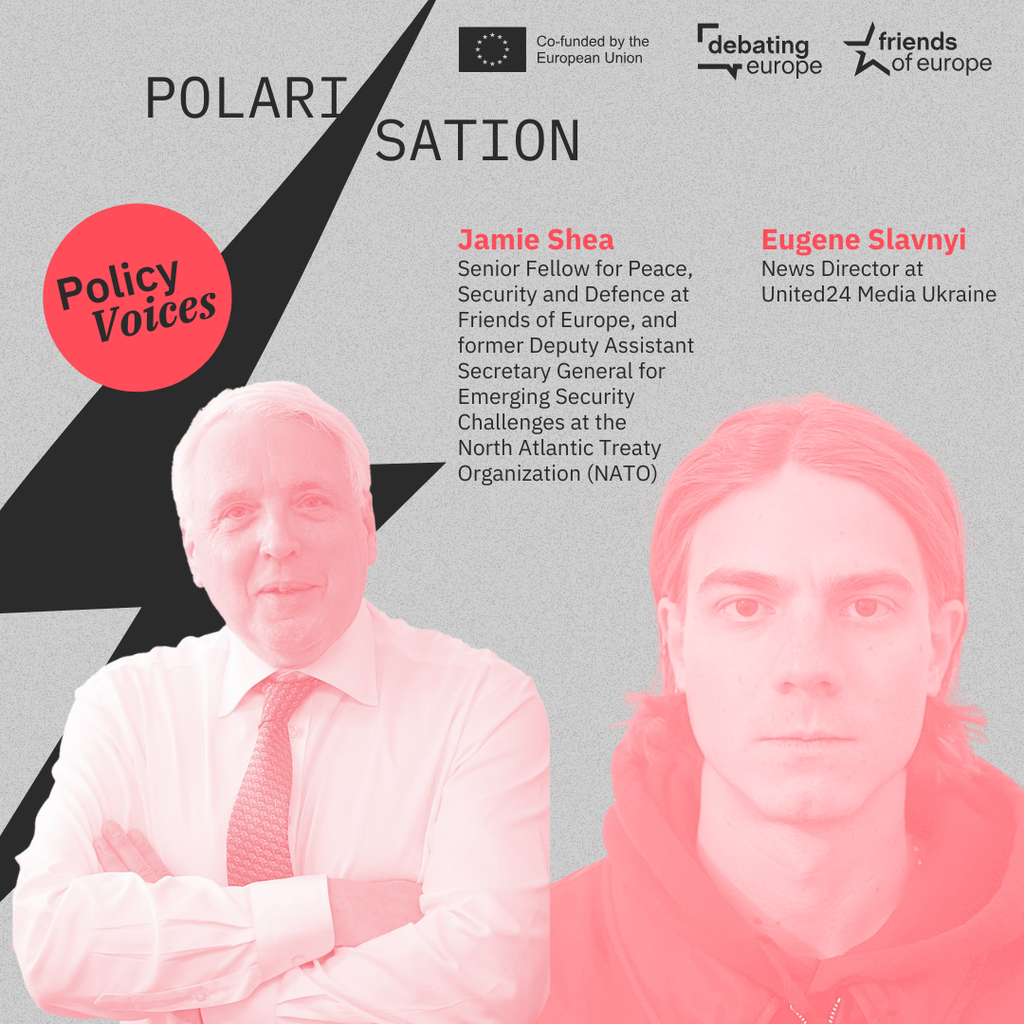From ambition to action: building Europe’s Defence Union
Past event In person

- Area of Expertise
- Peace, Security & Defence
Peace, Security & Defence

Europe and the United States are both entering a period of growing competition and tension in their relations with Russia. The Russia of today is more assertive, unpredictable and in many ways more dangerous than during the latter Cold War years.
Russia’s leadership after Nikita Khrushchev was ousted in 1964 was essentially cautious and conservative. Moscow still paid lip service to world revolution, but in practice the Kremlin was more interested in enhancing “strategic stability” and reducing the risks of nuclear war than in fomenting major political upheaval in the West. Beyond Europe, and especially in the Third World, Moscow relied on proxies like Cuba to advance its cause.
Under Vladimir Putin, Russia has become a revisionist state
Under Vladimir Putin, Russia has become a revisionist state. He believes that the European security system that emerged at the end of the Cold War is oriented against Russia and does not adequately reflect Russian interests and political ambitions. His goal is to reshape the post-Cold War security system in Europe in ways that enhance Russian interests and influence.
That was the main message when in February 2007 Putin used the annual Munich security conference to put the West on notice that Russia’s national interests meant it was no longer willing to allow the West to dictate the rules of the game.
Leonid Brezhnev and his successors had been risk-adverse. Putin, by contrast, is a risk-taker. He’s in constant search of ways to advance Russian interests at the West’s expense. When challenged, his inclination is not to seek compromise but to raise the ante, as he did in the wake of last July’s shooting down over the Ukraine of Malaysia Airlines’ flight MH17.
Rather than seeking to defuse the conflict, he increased the number, firepower and sophistication of the weapons Moscow funnelled to the separatists in eastern Ukraine, and clandestinely sent several thousand well-armed and well-trained Russian regular army soldiers into Ukraine. This bold move served to shift the tide of battle in Russia’s favour.
The annexation of Crimea showed the same combination of boldness and readiness to take big risks. The annexation caught Western leaders by surprise, leaving them flatfooted and unable to organise an effective response. Putin himself appeared surprised at the ease of the Crimean annexation. The Ukrainians put up no military resistance – reportedly having been advised by the United States and other Western governments not to resist. The annexation was enthusiastically welcomed by the overwhelming majority of Russian citizens and gave a major boost to Putin’s approval rating, which soared to over 85%.
Putin’s early successes appear to have convinced him that he can replicate them elsewhere; all he has to do is boldly seize the initiative as the disunited and unprepared West will prove incapable of opposing him. Ukraine is only part of a broader strategy aimed at strengthening Russia’s hold over the former Soviet space and weakening NATO. Putin’s recent actions suggest that the Baltic states could be the next victims of Russia’s forceful embrace.
Since Putin’s return to his country’s presidency, the violations of borders, airspace and territorial waters have increased significantly. The last 18 months have seen NATO fighter aircraft policing Baltic airspace scrambled over 100 times, three times more than in 2013. Russian pilots have often turned off their transponders, making communication with them impossible. Such incidents have not been limited to airspace and border incursions. Last September, Russian security operatives kidnapped an Estonian internal security service officer. They dragged him into Russia at gunpoint and charged him with espionage before a battery of Russian TV cameras. The incident is seen by Baltic officials as a blunt warning that despite the Baltic states’ NATO membership, Russia still acts as it pleases in the region.
Ukraine is only part of a broader strategy aimed at strengthening Russia’s hold over the former Soviet space and weakening NATO
Such incidents are designed to test Western resolve and remind the Baltic leaders of their vulnerability. The goal is to undermine confidence in NATO’s Article 5 security guarantee and to raise doubts regarding NATO’s willingness to honour its commitment to defend them. Estonia and Latvia have ethnic Russian minorities close to 25% of their populations. These minorities provide a ready-made instrument for exerting pressure on the Baltic governments, especially since Putin has stressed Russia’s responsibility to protect the welfare of ethnic Russians outside Russia’s borders. Alleged “mistreatments” of the Russian minority in Estonia or Latvia could be used as a pretext for military action.
As in Crimea and eastern Ukraine, Russia is unlikely to undertake an overt military invasion, but rather to use a combination of deception, clandestine sabotage and strategic ambiguity to try to destabilise one or more of the Baltic states. Or it might undertake a “smash and grab” operation in which it would violate the sovereignty of one or more Baltic states by seizing a small portion of either country’s border territory in areas heavily populated by the Russian minority.
Such an action would not aim to occupy one of the Baltic states militarily, but to sow mistrust among the Western allies and cast doubt on NATO’s ability to assist any of the Baltic states threatened by Russia. How, for instance, would NATO respond if a group representing the very large ethnic Russian community in Narva, an Estonian city close to the Russian border, claimed their safety was seriously endangered, and formally requested Russian military protection? Could Estonia count on a rapid NATO intervention to drive the Russians out? If not, and the NATO allies failed to uphold Article 5, the credibility of NATO’s commitments would be severely undermined.
The alliance needs to adjust to the new realities, and that means deploying U.S. and allied ground and air forces permanently on the soil of eastern European member states
All this suggests that more attention must be paid to unconventional threats in the Baltic region. Russia’s use of “hybrid warfare” needs to be addressed by NATO and by national planners, as do questions such as: when does Article 5 apply? What is the threshold and how can it be identified? What actions can be taken before the North Atlantic Council has formally authorised a NATO response?
Poland and the Baltic states want the permanent stationing of allied ground and air forces on their soil. NATO had refrained from this in the past because the NATO-Russia Founding Act, signed in Paris in May 1997, had said that in the “current and foreseeable security environment” the alliance would ensure its defence needs through reinforcement rather than by the permanent stationing in its new members of substantial combat forces.
Russia’s annexation of Crimea and its attempts to destabilise eastern Ukraine have now fundamentally altered the security environment. The alliance needs to adjust to the new realities, and that means deploying U.S. and allied ground and air forces permanently on the soil of eastern European member states. Although in the run up to last September’s NATO summit, Poland and the Baltic states had strongly urged NATO to adopt such a strategy, a number of alliance members argued that Russia would regard such a strategy as “provocative”. NATO instead decided to intensify deployments on a rotational rather than a permanent basis.
Other measures to strengthen NATO’s deterrence policy in the Baltic region include a Readiness Action Plan enlarging the NATO Response Force from 13,000 to 20,000 troops, and the creation of a “Spearhead Force” of several thousand troops that can be deployed in the Baltic region within a few days. These are important steps in the right direction, but in the absence of large permanent deployment there of U.S. and other allied ground and air forces, doubts about the collective defence of the region are bound to persist – and could grow if Putin steps up the pressure. Moscow recently raised the nuclear issue in a blatant attempt to intimidate, and in mid-March the Russian Ministry of Defence announced that it intendeds to deploy Iskander short-range nuclear-capable missiles near the Kaliningrad enclave that would then be able to strike Stockholm and Warsaw. Along with the planned stationing of long-range nuclear-capable TU-22M3 bombers in Crimea, these moves introduce a dangerous new element into Putin’s attempt to intimidate Poland and the Baltic states and erode NATO’s capacity to protect its members.
Past event In person

Next event

Past event Online

Past event Online





Stay informed
We use cookies and similar technologies to adjust your preferences, analyze traffic and measure the effectiveness of our campaigns. Learn more about our privacy policy.